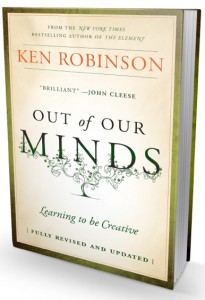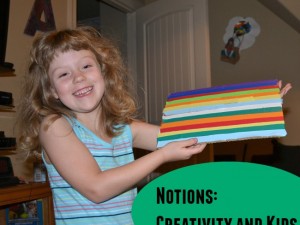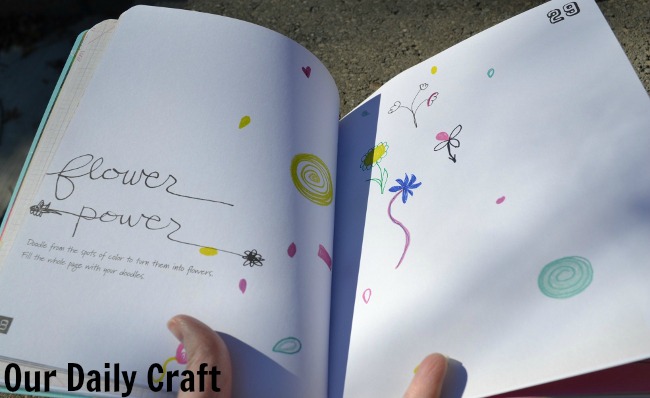Affiliate links may be included for your convenience. View our privacy and affiliates policy for details.
There’s a well-known quote attributed to Picasso that says all children are born artists, the trouble is keeping them that way when the grow up.
These days, it’s also apparently a problem to keep them as artists as they are growing up.
Because I’ve been thinking about creativity for moms, I’m also thinking about our kids, and how we can encourage them to never give up creativity in the first place.
Creative moms make creative kids, of course, because they can see that making and being creative are important to us and a central part of our lives.
But moms and parents can’t do it alone.
We need educational systems that support creative kids, classrooms that allow them to explore their own ideas, adults outside the home who model creative thinking and a sense of playfulness.
I’ve been reading Out of Our Minds by Ken Robinson, who is one of the greatest thinkers and writers about these issues. I’m not finished yet and will probably have a longer review when I am, but he has lots to say about “the waste of creative talent [that] is a growing calamity.”
He talks about how the educational system developed as a way to build up the middle class, “the essential route to social improvement and further economic opportunity.”
Universities were built to further educate an elite few, not the huge number of people who attend them today. Schools everywhere are less like the groves of Academia where Plato shared his learnings and more like industrial factories where children are moved along in a consistent, linear manner:
Students within the academic system are taught broadly the same material and they are assessed against common scales of achievement, with relatively few options for choice or deviation. Typically, they move through the system in age groups: all the five-year-olds together, all the six-year-olds together and so on, as if the most important thing that children have in common is their date of manufacture . . . Teaching is based on the division of labor. Like an assembly line, students progress from room to room to be taught by different teachers specializing in different disciplines.
Changing the way we teach our children is going to be vital to their success in an ever-changing world that requires creativity.
Cindy Foley of the Columbus Museum of Art said in her TedX talk that education should be focused on “developing learners that think like artists.”
She says we need to teach for creativity, which includes being comfortable with ambiguity, generating ideas and conducting transdisciplinary research that serves curiosity and ideas rather than an academic goal.
All of this sounds great to me, but it’s not likely to happen soon. In the meantime, we need to do all we can support creativity in our kids, by reading to them, telling them stories, listening to their stories, letting them paint, doing creative stuff with them, following their curiosity wherever it leads (even and especially if its not in a traditional academic way), letting them daydream and have “thought experiments,” talking to them about their art in the right way, taking them to see art and talking about it, and just encouraging and supporting whatever their passion is at that particular time.
How do you combine creativity and kids? I’d love to hear about it!



